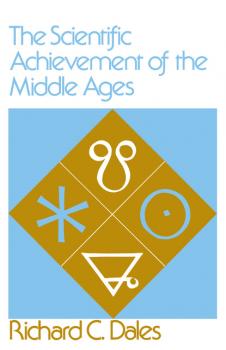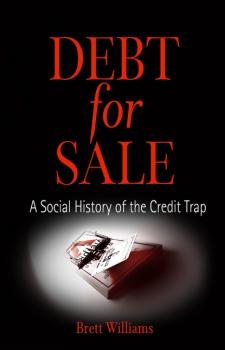MREADZ.COM - много разных книг на любой вкус
Скачивание или чтение онлайн электронных книг.Women in Medieval Society
Early medieval women exercised public roles, rights, and responsibilities. Women contributed through their labor to the welfare of the community. Women played an important part in public affairs. They practiced birth control through abortion and infanticide. Women committed crimes and were indicted. They owned property and administered estates. The drive toward economic growth and expansion abroad rested on the capacity of women to staff and manage economic endeavors at home. In the later Middle Ages, the social position of women altered significantly, and the reasons why the role of women in society tended to become more restrictive are examined in these essays.
The Ingenious Dr. Franklin
An outstanding collection of Benjamin Franklin's scientific correspondence, The Ingenious Dr. Franklin has long been unavailable yet deserves a place beside his Autobiography as essential reading for everyone interested in history, wit, and invention. Portioned into three sections, «Practical Schemes and Suggestions,» «Diverse Experiments and Observations,» and «Scientific Deductions and Conjectures,» these letters discuss an extraordinary range of topics, including the art of procuring pleasant dreams, choosing eye glasses, the first human flight, the character of clouds, the behavior of oil and water, smallpox and cancer, the cause of colds, charting the Gulf Stream, and prehistoric animals of the Ohio. Culled from ponderous volumes of collected works or private collections, these engaging and unabridged letters were assembled to allow readers to discover for themselves Benjamin Franklin's vigorous personality, his humanity, and his penetrating intelligence.
The Scientific Achievement of the Middle Ages
The scientists of the twelfth century were daring, original, inventive, and above all determined to discover purely rational explanations of natural phenomena. Their intense interest in the natural world for its own sake, their habits of precise observation, and the high value they place on man as a rational being portend a new age in the history of scientific thought. This book offers a comprehensive sampling of medieval scientific thought in the context of an historical narrative.
Praxis and Action
From the Introduction: This inquiry is concerned with the themes of praxis and action in four philosophic movements: Marxism, existentialism, pragmatism, and analytic philosophy. It is rare that these four movements are considered in a single inquiry, for there are profound differences of emphasis, focus, terminology, and approach represented by these styles of thought. Many philosophers believe that similarities among these movements are superficial and that a close examination of them will reveal only hopelessly unbridgeable cleavages. While respecting the genuine fundamental differences of these movements, this inquiry is undertaken in the spirit of showing that there are important common themes and motifs in what first appears to be a chaotic babble of voices. I intend to show that the concern with man as an agent has been a primary focal point of each of these movements and further that each contributes something permanent and important to our understanding of the nature and context of human activity.
Sinop Landscapes
The Black Sea coast is different from the rest of Turkey. For more than 5,000 years Sinop, the central point on the Turkish coast, has seemed more remote from the rest of the Anatolian land mass than from Greece, Italy, Africa, the Crimea, Istanbul, and Rome. How was Sinop connected to them? The Black Sea Trade Project explores the perception of connectedness: how connected did people feel to those in other upland villages, coastal villages, ports, the big port of Sinop, and to distant shores? How did economic, infrastructural, and political institutions bind local populations to larger systems, and how were various institutional processes situated in landscapes? In this first volume from the Sinop Regional Archaeological Project, Owen P. Doonan rigorously explores connection through Sinop and its hinterland, from precolonial Greek settlements through ages of empires, Roman, Russian, and Ottoman conquests to the present day.
A Central Asian Village at the Dawn of Civilization
This integration of earlier and new scholarship reconceptualizes the origins of civilization, challenging the received view that the ancient Near East spawned the spread of civilization outward from Mesopotamia to all other neighboring cultures. Central Asia is here shown to have been a major player in the development of cities. Skillfully documenting the different phases of both Soviet and earlier Western external analyses along with recent excavation results, this new interpretation reveals Central Asia's role in the socioeconomic and political processes linked to both the Iranian Plateau and the Indus Valley, showing how it contributed substantively to the origins of urbanism in the Old World. Hiebert's research at Anau and his focus on the Chalcolithic levels provide an essential starting point for understanding both the nature of village life and the historical trajectories that resulted in Bronze Age urbanism. University Museum Monograph, 116
Debt for Sale
Credit and debt appear to be natural, permanent facets of Americans' lives, but a debt-based economy and debt-financed lifestyles are actually recent inventions. In 1951 Diners Club issued a plastic card that enabled patrons to pay for their meals at select New York City restaurants at the end of each month. Soon other «charge cards» (as they were then known) offered the convenience for travelers throughout the United States to pay for hotels, food, and entertainment on credit. In the 1970s the advent of computers and the deregulation of banking created an explosion in credit card use—and consumer debt. With gigantic national banks and computer systems that allowed variable interest rates, consumer screening, mass mailings, and methods to discipline slow payers with penalties and fees, middle-class Americans experienced a sea change in their lives. Given the enormous profits from issuing credit, banks and chain stores used aggressive marketing to reach Americans experiencing such crises as divorce or unemployment, to help them make ends meet or to persuade them that they could live beyond their means. After banks exhausted the profits from this group of people, they moved into the market for college credit cards and student loans and then into predatory lending (through check-cashing stores and pawnshops) to the poor. In 2003, Americans owed nearly $8 trillion in consumer debt, amounting to 130 percent of their average disposable income. The role of credit and debt in people's lives is one of the most important social and economic issues of our age. Brett Williams provides a sobering and frank investigation of the credit industry and how it came to dominate the lives of most Americans by propelling the social changes that are enacted when an economy is based on debt. Williams argues that credit and debt act to obscure, reproduce, and exacerbate other inequalities. It is in the best interest of the banks, corporations, and their shareholders to keep consumer debt at high levels. By targeting low-income and young people who would not be eligible for credit in other businesses, these companies are able quickly to gain a stranglehold on the finances of millions. Throughout, Williams provides firsthand accounts of how Americans from all socioeconomic levels use credit. These vignettes complement the history and technical issues of the credit industry, including strategies people use to manage debt, how credit functions in their lives, how they understand their own indebtedness, and the sometimes tragic impact of massive debt on people's lives.
Biotech
The seemingly unlimited reach of powerful biotechnologies and the attendant growth of the multibillion-dollar industry have raised difficult questions about the scientific discoveries, political assumptions, and cultural patterns that gave rise to for-profit biological research. Given such extraordinary stakes, a history of the commercial biotechnology industry must inquire far beyond the predictable attention to scientists, discovery, and corporate sales. It must pursue how something so complex as the biotechnology industry was born, poised to become both a vanguard for contemporary world capitalism and a focal point for polemic ethical debate. In Biotech , Eric J. Vettel chronicles the story behind genetic engineering, recombinant DNA, cloning, and stem-cell research. It is a story about the meteoric rise of government support for scientific research during the Cold War, about activists and student protesters in the Vietnam era pressing for a new purpose in science, about politicians creating policy that alters the course of science, and also about the release of powerful entrepreneurial energies in universities and in venture capital that few realized existed. Most of all, it is a story about people—not just biologists but also followers and opponents who knew nothing about the biological sciences yet cared deeply about how biological research was done and how the resulting knowledge was used. Vettel weaves together these stories to illustrate how the biotechnology industry was born in the San Francisco Bay area, examining the anomalies, ironies, and paradoxes that contributed to its rise. Culled from oral histories, university records, and private corporate archives, including Cetus, the world's first biotechnology company, this compelling history shows how a cultural and political revolution in the 1960s resulted in a new scientific order: the practical application of biological knowledge supported by private investors expecting profitable returns eclipsed basic research supported by government agencies.
Beer in the Middle Ages and the Renaissance
The beer of today—brewed from malted grain and hops, manufactured by large and often multinational corporations, frequently associated with young adults, sports, and drunkenness—is largely the result of scientific and industrial developments of the nineteenth century. Modern beer, however, has little in common with the drink that carried that name through the Middle Ages and Renaissance. Looking at a time when beer was often a nutritional necessity, was sometimes used as medicine, could be flavored with everything from the bark of fir trees to thyme and fresh eggs, and was consumed by men, women, and children alike, Beer in the Middle Ages and the Renaissance presents an extraordinarily detailed history of the business, art, and governance of brewing. During the medieval and early modern periods beer was as much a daily necessity as a source of inebriation and amusement. It was the beverage of choice of urban populations that lacked access to secure sources of potable water; a commodity of economic as well as social importance; a safe drink for daily consumption that was less expensive than wine; and a major source of tax revenue for the state. In Beer in the Middle Ages and the Renaissance , Richard W. Unger has written an encompassing study of beer as both a product and an economic force in Europe. Drawing from archives in the Low Countries and England to assemble an impressively complete history, Unger describes the transformation of the industry from small-scale production that was a basic part of housewifery to a highly regulated commercial enterprise dominated by the wealthy and overseen by government authorities. Looking at the intersecting technological, economic, cultural, and political changes that influenced the transformation of brewing over centuries, he traces how improvements in technology and in the distribution of information combined to standardize quality, showing how the process of urbanization created the concentrated markets essential for commercial production. Weaving together the stories of prosperous businessmen, skilled brewmasters, and small producers, this impressively researched overview of the social and cultural practices that surrounded the beer industry is rich in implication for the history of the period as a whole.
The Captive's Position
Why do narratives of Indian captivity emerge in New England between 1682 and 1707 and why are these texts, so centrally concerned with women's experience, supported and even written by a powerful group of Puritan ministers? In The Captive's Position , Teresa Toulouse argues for a new interpretation of the captivity narrative—one that takes into account the profound shifts in political and social authority and legitimacy that occurred in New England at the end of the seventeenth century. While North American narratives of Indian captivity had been written before this period by French priests and other European adventurers, those stories had focused largely on Catholic conversions and martyrdoms or male strategies for survival among the Indians. In contrast, the New England texts represented a colonial Protestant woman who was separated brutally from her family but who demonstrated qualities of religious acceptance, humility, and obedience until she was eventually returned to her own community. Toulouse explores how the female captive's position came to resonate so powerfully for traditional male elites in the second and third generation of the Massachusetts colony. Threatened by ongoing wars with Indians and French as well as by a range of royal English interventions in New England political and cultural life, figures such as Increase Mather, Cotton Mather, and John Williams perceived themselves to be equally challenged by religious and social conflicts within New England. By responding to and employing popular representations of female captivity, they were enabled to express their ambivalence toward the world of their fathers and toward imperial expansion and thereby to negotiate their own complicated sense of personal and cultural identity. Examining the captivity narratives of Mary Rowlandson, Hannah Dustan, Hannah Swarton, and John Williams (who comes to stand in for the female captive), Toulouse asserts the need to read these gendered texts as cultural products that variably engage, shape, and confound colonial attitudes toward both Europe and the local scene in Massachusetts. In doing so, The Captive's Position offers a new story of the rise and breakdown of orthodox Puritan captivities and a meditation on the relationship between dreams of authority and historical change.









